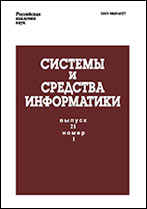|
This article is cited in 3 scientific papers (total in 3 papers)
Computer and economic models of new knowledge generation: A comparative analysis
I. M. Zatsman
Federal Research Center "Computer Science and Control" of the Russian Academy of Sciences, 44-2 Vavilov Str., Moscow 119133, Russian Federation
Abstract:
Two models of generating new knowledge are compared. The first, the spiral model, describes the processes of generating new knowledge in the economic sphere. The second model is used in computational linguistics and medical informatics. This model focuses on the design of information technologies and automated systems that ensure the generation of new knowledge during the semantic analysis of texts (referred to as the information technology-oriented model, or ITO model). The comparison of the two models is presented as a step-by-step transformation of the spiral model into the ITO model. The primary purpose of the paper is to describe four stages of transformation. At the first stage, mental and informational media are separated in the spiral model. Then, at the second stage, a digital medium is added to them with potential sources of new knowledge in the form of a database of text data corresponding to the goal of knowledge discovery from texts. The reference sample of the novelty of the discovered knowledge is being set. At the third stage, a list of eight processes of generating new knowledge is formed. A knowledge base is being added for storing forms of representation of concepts of newly discovered knowledge. The transformation of the spiral model into the ITO model is completed at the fourth stage by integrating eight processes of generating new knowledge. The stages of transformation are illustrated by an example of discovering new knowledge about the meanings of German modal verbs.
Keywords:
spiral model, generation of new knowledge, ITO model, semantic analysis of texts, transformation of the spiral model.
Received: 11.10.2021
Citation:
I. M. Zatsman, “Computer and economic models of new knowledge generation: A comparative analysis”, Sistemy i Sredstva Inform., 31:4 (2021), 84–96
Linking options:
https://www.mathnet.ru/eng/ssi800 https://www.mathnet.ru/eng/ssi/v31/i4/p84
|

|




 Contact us:
Contact us: Terms of Use
Terms of Use
 Registration to the website
Registration to the website Logotypes
Logotypes








 Citation in format
Citation in format 
